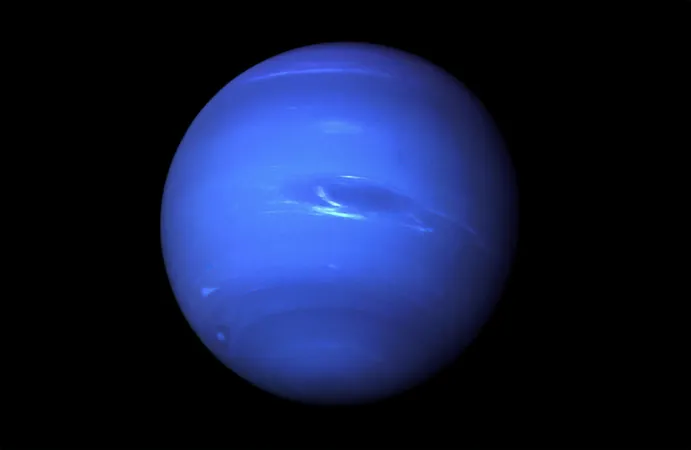
Unlocking Cosmic Mysteries: Distant Icy Worlds Hold Secrets of Our Solar System
2025-04-29
Author: Ming
The outer realms of our solar system are revealing incredible insights into its formation and history. Recent findings on distant icy bodies beyond Neptune provide new clues about the solar system's evolution.
A Bold Research Initiative
Led by scientists from the University of Central Florida (UCF), this groundbreaking research utilizes the advanced capabilities of the James Webb Space Telescope (JWST). Their work focuses on Trans-Neptunian Objects (TNOs)—remote, frozen worlds that serve as windows into the solar system's past.
Discoveries of Methanol on Outer Worlds
The UCF research team detected unexpected patterns of methanol on TNO surfaces, linking these chemical elements to the origins of life. Their analysis categorized TNOs into two distinct groups based on the presence and abundance of methanol ice.
Some TNOs revealed strong traces of methanol lurking beneath their surfaces, while others farther from the sun displayed a weaker signature. This variation implies that cosmic radiation over billions of years has transformed the chemistry of these alien worlds.
Icy Time Capsules of the Solar System
TNOs are often likened to ancient time capsules, retaining the secrets of the early protoplanetary disk—the gaseous cloud that birthed our sun and planets. By scrutinizing these icy relics, scientists can glimpse a time long before planetary bodies emerged.
Professor Noemí Pinilla-Alonso, a leading figure in this project currently at the University of Oviedo in Spain, emphasizes the significance of methanol in understanding our origins. "Methanol is not merely a remnant of the past; it could reveal transformative changes due to radiation exposure—acting as a chemical time capsule for these ice worlds," she notes.
The Importance of Methanol
Methanol is a crucial compound in the formation of organic molecules, potentially bridging the gap between frozen chemistry in space and the building blocks of life. Pinilla-Alonso highlights new spectral differences indicating that TNOs may have formed from varied ingredients, reflecting their unique evolutionary paths.
Modeling Cosmic Chemistry
Ana Carolina de Souza-Feliciano from UCF Florida Space Institute contributed greatly to the understanding of methanol behavior in space. Her laboratory work demonstrated that methanol's signatures vary at different wavelengths—a revelation that connected observational data with real-world chemistry.
Unearthing Solar System Origins
De Souza-Feliciano further explored the characteristics of TNOs as part of the DiSCo initiative. The "cliff group" of TNOs, which includes the cold-classical group, is particularly valuable for tracing the solar system's beginnings, staying largely unchanged since their formation.
Future Missions Inspired
The findings also hold promise for future space missions. According to astronomer Rosario Brunetto from Université Paris-Saclay, these insights reshape our understanding of TNOs and provide vital references for analyzing distant celestial bodies like Neptune Trojans and Centaurs.
"The quest for methanol not only enriches scientific knowledge but also ignites curiosity and inspires new generations to venture into the cosmos," Brunetto asserts. This intriguing study was published in The Astrophysical Journal Letters and underscores the importance of icy worlds in revealing the mysteries of our solar system.


 Brasil (PT)
Brasil (PT)
 Canada (EN)
Canada (EN)
 Chile (ES)
Chile (ES)
 Česko (CS)
Česko (CS)
 대한민국 (KO)
대한민국 (KO)
 España (ES)
España (ES)
 France (FR)
France (FR)
 Hong Kong (EN)
Hong Kong (EN)
 Italia (IT)
Italia (IT)
 日本 (JA)
日本 (JA)
 Magyarország (HU)
Magyarország (HU)
 Norge (NO)
Norge (NO)
 Polska (PL)
Polska (PL)
 Schweiz (DE)
Schweiz (DE)
 Singapore (EN)
Singapore (EN)
 Sverige (SV)
Sverige (SV)
 Suomi (FI)
Suomi (FI)
 Türkiye (TR)
Türkiye (TR)
 الإمارات العربية المتحدة (AR)
الإمارات العربية المتحدة (AR)